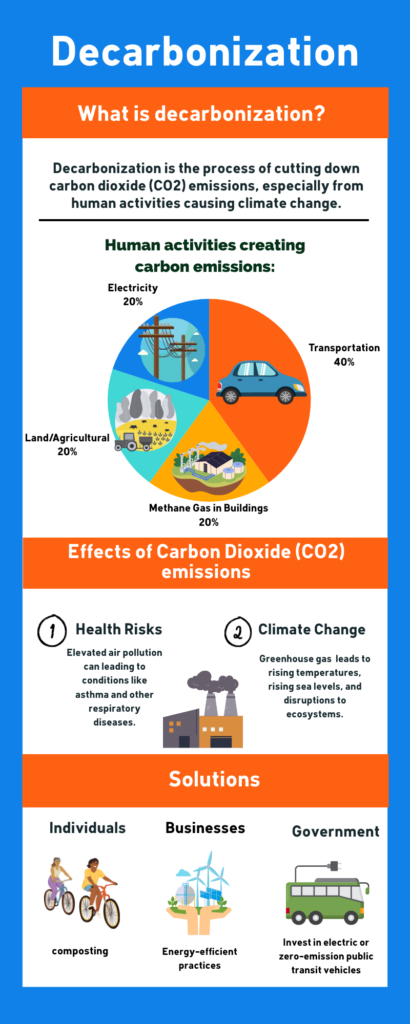By Monserrat Mejia, SanDiego350 Intern
Unveiling the San Diego Regional Decarbonization Framework

In the race against climate change, the San Diego region has embarked on an ambitious journey outlined by the Regional Decarbonization Framework (RDF). The primary goal? To achieve net-zero carbon emissions by the year 2045 with the County’s Climate Action Plan Update and their Regional Decarbonization Framework. This groundbreaking initiative not only recognizes the urgency of addressing climate change but also emphasizes the importance of equitable and sustainable strategies in the pursuit of a greener future.
Understanding the Need for Decarbonization
The Greenhouse Gas Menace:
Carbon emissions serve as the notorious culprits behind the engine driving climate warming. According to IPCC website this invisible force is responsible for a myriad of environmental challenges, from extreme weather events to rising sea levels and disruptions in ecosystems worldwide. Every ton of carbon released into the atmosphere sets off a chain reaction, posing a threat to the stability of life on our planet.
The Blanket Analogy:
Visualize carbon emissions as a thickening blanket enveloping Earth. Similar to how a blanket traps heat close to a person’s body, carbon emissions trap solar heat, leading to a steady rise in global temperatures. This warming effect is at the core of the environmental issues we face today.
Strategies Unveiled: How RDF Plans to Achieve Net-Zero
1. Building a Greener Tomorrow
Transitioning from Fossil Fuels to Electric:
RDF recognizes the pivotal role played by buildings in carbon emissions. The framework encourages a shift from fossil fuel dependency to electric alternatives. This involves not only adopting electric appliances but also installing solar panels and transitioning to heat pumps, creating more sustainable and energy-efficient structures.
2. Renewable Energy
Increasing Renewable Energy Share:
One of the cornerstones of RDF is the commitment to increase the share of electricity generated from renewable sources. Embracing solar, hydro, and geothermal energy, San Diego aims to reduce its reliance on non-renewable resources, fostering a cleaner and more sustainable energy landscape.
3. Responsible Land Use
Protecting Natural Ecosystems:
Land use is a critical component of the RDF strategy. By safeguarding natural ecosystems like wetlands and promoting sustainable agricultural practices such as water conservation, agroforestry, and organic farming, San Diego aims to mitigate the impact of human activities on the environment.
4. Revolutionizing Transportation
Investing in Sustainable Transportation:
RDF recognizes the impact of transportation on carbon emissions. The framework calls for substantial investments in and promotion of public and active transportation modes, including walking, cycling, and other non-motorized alternatives. This shift aims to reduce the carbon footprint associated with traditional modes of transportation.
A Collective Effort for a Sustainable Future
As San Diego takes bold strides towards achieving net-zero carbon emissions, the Regional Decarbonization Framework stands as a testament to the power of collective action. By implementing these comprehensive strategies, the region not only aims to combat climate change but also strives to create a more sustainable and equitable future for generations to come. It’s a journey that requires commitment, innovation, and a shared vision for a greener tomorrow.
